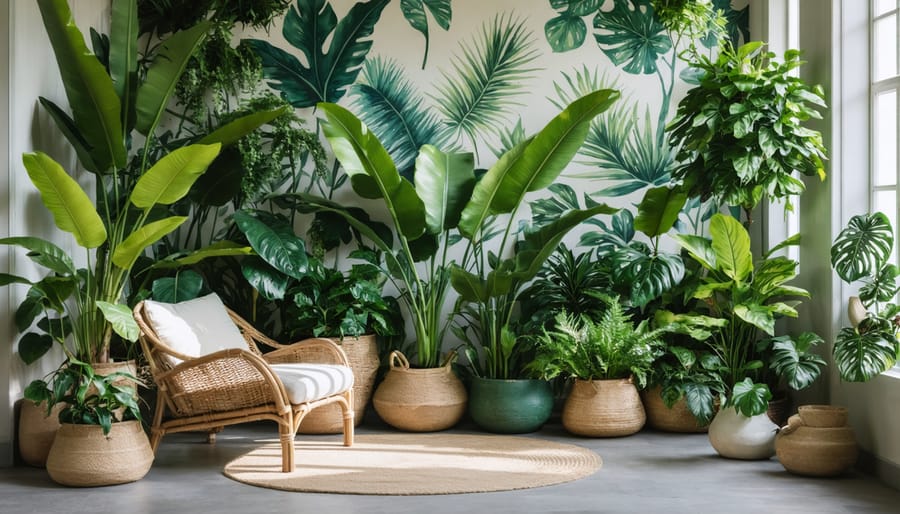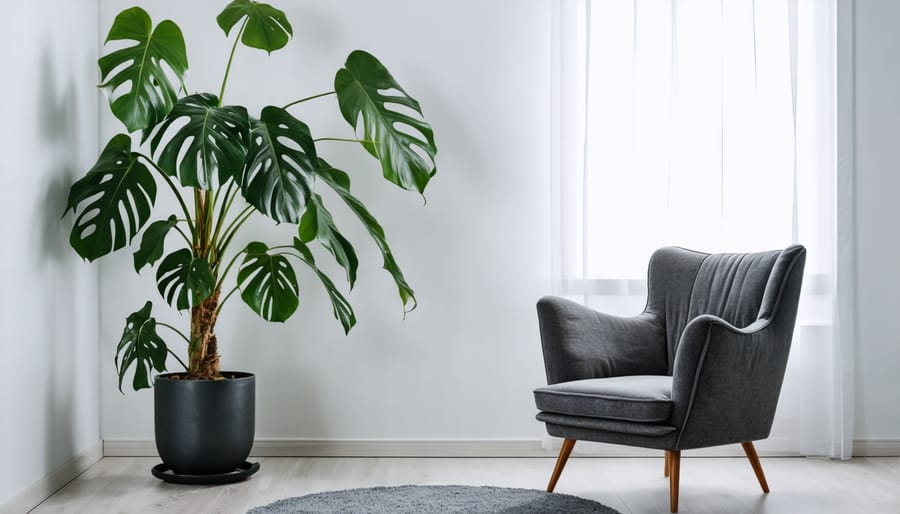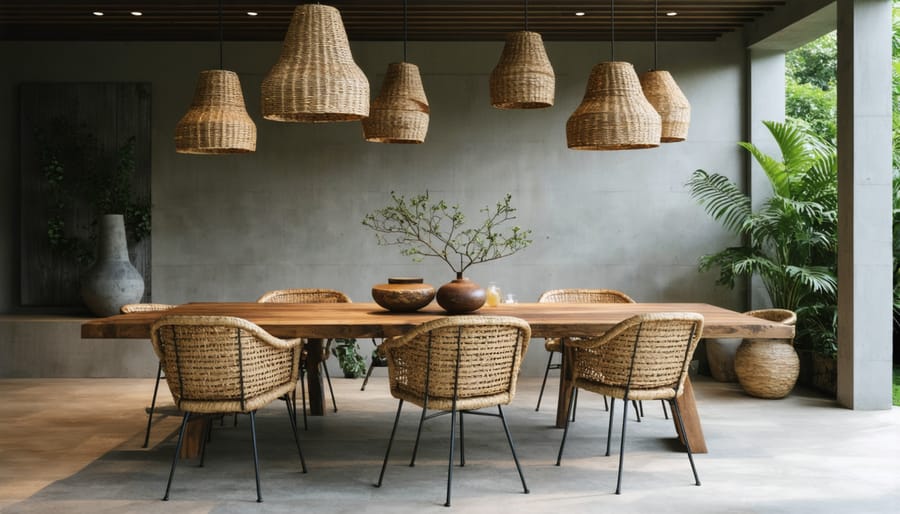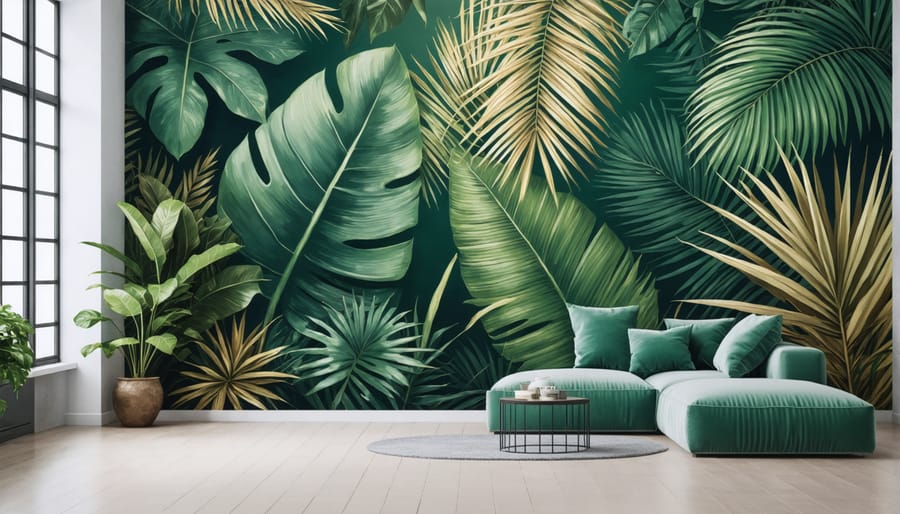
Bring Your Garden Inside: Creative Ways to Transform Your Home with Nature
Transform your living space into a lush sanctuary by bringing the enchanting elements of nature indoors. From the top gardens to watch for inspiration to learning how to create an indoor oasis, garden-inspired décor bridges the gap between outdoor beauty and interior comfort. Natural materials, living walls, and botanical prints create layers of organic charm, while strategically placed mirrors amplify natural light and create the illusion of bringing your garden views inside. Whether you’re working with a spacious suburban home or a cozy urban apartment, incorporating elements like weathered wood furnishings, hand-pressed flower art, and cascading indoor plants can transform any room into a refreshing retreat that celebrates the timeless appeal of garden aesthetics. The key lies in choosing pieces that not only echo nature’s beauty but also serve practical purposes in your daily life, creating a harmonious blend of form and function that makes your space feel both grounded and alive.
Living with Living Plants
Statement Plant Displays
Transform any room into a lush sanctuary by creating eye-catching plant displays that command attention. Large statement plants, like Monstera deliciosa or towering Fiddle Leaf Figs, can instantly elevate a space’s ambiance. Position these botanical beauties in corners or beside furniture pieces where they’ll have room to flourish and make maximum impact.
Get creative with your container arrangements by grouping plants of varying heights and textures. Try combining tall, architectural plants with trailing varieties and bushy specimens to create dynamic visual interest. Don’t shy away from mixing different pot styles – combine ceramic, woven, and metallic planters for an eclectic yet cohesive look.
For spaces that don’t receive much natural light, explore plants for low-light spaces like ZZ plants or Chinese Evergreens. These hardy varieties can thrive in dimmer conditions while still making a bold statement.
Consider creating a living wall with multiple shelves of plants, or arrange a collection of specimens on a dedicated plant stand. The key is to think vertically as well as horizontally – use plant stands of different heights, wall-mounted planters, or even macramé hangers to add depth and dimension to your display.
Remember to rotate your plants regularly so they grow evenly and maintain their shape. This simple maintenance trick helps ensure your statement pieces continue to look their best while serving as stunning focal points in your garden-inspired interior.

Living Walls and Plant Shelves
Living walls and plant shelves have become increasingly popular ways to create stunning vertical gardens inside our homes. I remember being amazed when I first installed a small living wall in my home office – it transformed the space into a lush oasis that instantly boosted my mood and productivity.
To create your own living wall, start by selecting a well-lit wall that can support the weight of your installation. Choose a system that matches your maintenance comfort level – from pocket planters and modular panels to more sophisticated hydroponic systems. For beginners, I recommend starting with hardy plants like pothos, philodendrons, and ferns, which adapt well to vertical growing conditions.
Plant shelves offer a more flexible alternative to living walls. Install floating shelves at varying heights to create visual interest, ensuring they receive adequate natural light. Consider using clear acrylic or glass shelves to minimize shadows on lower plants. Mix trailing plants like string of pearls with upright specimens like snake plants for dynamic depth and texture.
Maintenance is key to success with vertical gardens. Install a drip irrigation system or develop a regular watering schedule. Check soil moisture weekly, trim dying foliage promptly, and rotate plants occasionally to ensure even growth. During winter months, watch for cold drafts near windows that might affect your plants.
For those short on time, consider low-maintenance alternatives like preserved moss walls or artificial green walls that still capture the essence of a vertical garden without the upkeep requirements.
Natural Materials and Textures
Woven Wonders
Natural woven materials bring an organic, airy feel to any space, perfectly complementing garden-inspired decor while following traditional garden design principles. Wicker, rattan, and bamboo elements add texture and warmth while maintaining that crucial connection to nature we’re trying to achieve.
In my experience, starting small with woven accessories like baskets for potted plants or rattan pendant lights can make a significant impact. These materials work particularly well in sunrooms and covered porches, where they create a seamless transition between indoor and outdoor spaces. I’ve found that mixing different weave patterns – tight weaves for furniture and loose, open weaves for lighting fixtures – adds visual interest without overwhelming the space.
Consider incorporating bamboo Roman shades, which filter sunlight beautifully while adding natural texture to windows. Rattan chairs paired with plush, botanical-print cushions create inviting seating areas, while woven storage baskets keep gardening supplies organized and on theme. For a modern twist, look for pieces that combine woven elements with clean lines and contemporary materials.
Remember that these natural materials age gracefully, developing character over time. To maintain their beauty, keep them away from direct water exposure and dust regularly with a soft brush. In humid areas, ensure good air circulation to prevent mold growth. When selecting pieces, opt for sustainably sourced materials from reputable manufacturers who prioritize environmental responsibility.

Stone and Wood Accents
Bringing the rugged beauty of nature indoors through stone and wood elements creates an instant connection to the garden landscape. Natural materials add warmth, texture, and timeless appeal to any room while maintaining that crucial indoor-outdoor flow that garden enthusiasts love.
Consider incorporating a live-edge wood dining table or coffee table as a stunning centerpiece. These pieces showcase the natural grain patterns and organic edges of the wood, making each one unique. For a more subtle approach, floating wooden shelves can display your favorite potted herbs or botanical collections while adding architectural interest.
In the kitchen, natural stone countertops like granite or marble not only provide durability but also echo the organic patterns found in nature. Choose varieties with veining that reminds you of trailing vines or flowing water. For a budget-friendly alternative, consider stone-look quartz that captures the same essence without the maintenance requirements.
Decorative accents are where you can really have fun with natural materials. Think driftwood sculptures, polished river rocks in glass vessels, or slate coasters. I love collecting interesting pieces during garden walks and incorporating them into my decor – there’s something special about displaying items with a personal connection to nature.
For vertical interest, consider installing a stone accent wall or wood paneling in natural, weathered tones. These elements create a perfect backdrop for hanging plants or botanical artwork. Remember to balance these heavier elements with softer textures like cushions and throws to maintain a welcoming atmosphere.
To maintain authenticity, opt for materials with minimal processing and natural finishes that allow the inherent beauty of stone and wood to shine through.
Botanical Prints and Patterns
Wallpaper and Wall Art
Transform your walls into a celebration of nature with botanical prints and garden-inspired wallpaper that bring the outdoors in year-round. Whether you prefer bold tropical leaves or delicate wildflower patterns, these design elements can create the perfect backdrop for your seasonal floral displays and other natural decor.
Consider creating a gallery wall featuring vintage botanical illustrations, which add both scientific interest and artistic beauty to your space. Mix and match different sized frames with pressed flower artwork, herbarium specimens, and garden-themed photography for an eclectic yet cohesive look. For a modern twist, try abstract florals or oversized botanical prints in contemporary color schemes.
Wallpaper has made a stunning comeback, with many designers offering nature-inspired patterns that range from subtle to statement-making. Look for designs featuring climbing vines, scattered petals, or detailed leaf patterns. For those hesitant about committing to permanent wallpaper, removable options offer flexibility while still delivering maximum impact.
When selecting your wall decor, consider the room’s natural light and existing color palette. Softer, more muted botanical prints work beautifully in bedrooms and reading nooks, while bolder patterns can energize living spaces and dining rooms. Remember to vary the scale of your patterns – combining large-scale wallpaper with smaller framed pieces creates visual interest without overwhelming the space.

Fabric Choices
Bringing the garden indoors through fabric choices can transform your living spaces into a perpetual springtime retreat. When selecting upholstery and textiles, look for patterns featuring botanical prints, from delicate wildflowers to bold tropical leaves. Large-scale floral prints on curtains can create a stunning focal point, while smaller, more subtle patterns work beautifully on throw pillows and chair cushions.
Consider the seasonality of your fabric choices. Light, airy cottons and linens with pastel flower prints are perfect for spring and summer, while rich velvets featuring deeper-toned botanical patterns can warm up your space during cooler months. I’ve found that mixing different floral scales – say, a large-print sofa with small-pattern accent pillows – creates visual interest without overwhelming the space.
Don’t forget about texture! Incorporate natural-feeling fabrics like raw silk, organic cotton, or even grass cloth-inspired weaves to enhance the garden atmosphere. For a cohesive look, choose fabrics that complement your existing color scheme while incorporating elements from your outdoor garden palette.
Removable covers for throw pillows are particularly practical, allowing you to switch patterns seasonally or freshen up your decor. When selecting outdoor-inspired fabrics for high-traffic areas, opt for durable materials with soil-resistant treatments – they’ll maintain their garden-fresh appearance longer while standing up to daily use.
Remember, even small fabric additions like table runners or decorative napkins can contribute to your garden-inspired theme without requiring a major investment or commitment.
Garden-Inspired Color Schemes
Nature provides the perfect inspiration for creating harmonious color schemes throughout your home. Just as gardens transition through subtle color variations, you can bring these organic palettes indoors to create spaces that feel both refreshing and serene.
Start by observing your favorite garden moments: the soft lavenders and silvery greens of an herb garden, the vibrant yellows and purples of a wildflower meadow, or the rich emeralds and deep browns of a woodland setting. These natural combinations can serve as your blueprint for room colors.
For a calming bedroom atmosphere, consider adopting the colors of a morning garden: soft sage greens, misty blues, and gentle blush tones reminiscent of dawn-kissed petals. In living spaces, you might draw inspiration from summer blooms with warmer hues like sunny yellows, coral pinks, and foundation colors of earthy browns and mossy greens.
Kitchen spaces can come alive with herb-garden inspired palettes: combine fresh greens with clean whites, adding pops of purple (like flowering chives) or sunny yellow (like blooming dill) for accent colors. For dining rooms, the rich jewel tones of autumn gardens – deep purples, burnt oranges, and golden yellows – create an intimate atmosphere perfect for gathering.
Don’t forget the power of neutrals found in nature: stone grays, bark browns, and sandy beiges can ground your color scheme while providing a sophisticated backdrop for more vibrant botanical hues. These earthy neutrals work particularly well in transitional spaces like hallways and entryways.
Remember that, just as in a garden, colors should flow naturally from one room to the next. Use varying shades of your chosen palette to create depth and interest, much like the layers in a well-planned garden bed. Incorporate these colors through paint, textiles, artwork, and accessories to create a cohesive, nature-inspired home that changes and adapts with the seasons.
Bringing the enchanting world of gardens into your home is more than just a design choice – it’s a lifestyle transformation that can enhance your well-being and create a more vibrant living space. Throughout this guide, we’ve explored numerous ways to incorporate nature’s beauty into your home decor, from selecting the perfect indoor plants to choosing garden-inspired textiles and creating stunning botanical displays.
Remember that your garden-inspired home transformation doesn’t need to happen all at once. Start small by incorporating a few potted plants or botanical prints, then gradually expand your natural elements as your confidence grows. The key is to create a space that reflects your personal connection with nature while maintaining functionality and style.
Whether you’re drawn to the lush greenery of tropical plants, the delicate beauty of dried flowers, or the rustic charm of natural materials, there’s a garden-inspired design element perfect for your home. Don’t be afraid to experiment with different combinations and adjust your decor seasonally to keep your space fresh and dynamic.
As you embark on your garden-inspired decorating journey, let your creativity bloom. Mix textures, layer natural elements, and most importantly, create a space that brings you joy and tranquility. After all, the most beautiful gardens – both outdoors and in – are those that reflect the passion and personality of their creators.




Add A Comment